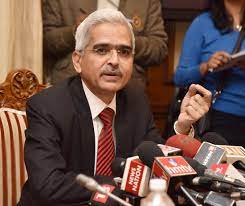BANKS
Interest rates on bank loans and deposits to rise
RBI hikes repo rate by 40 basis points to contain inflation; CRR raised by 50 bps to suck out Rs 87,000-crore of liquidity in banking system.
RBI hikes repo rate by 40 basis points to contain inflation; CRR raised by 50 bps to suck out Rs 87,000-crore of liquidity in banking system.

Interest rates on bank loans and deposits are expected to shoot up after the Reserve Bank of India (RBI) Governor Shaktikanta Das announced an immediate hike in the key lending rate by 40 basis points to 4.40%.
Around Rs 87,000-crore of liquidity is also estimated to be sucked out from the banking system with the RBI hiking the cash reserve ratio (CRR) by 50 bps to 4.50% in an unscheduled announcement on 4 May. This will come into effect from 21 May.
The hike, taken to contain inflation, comes after an almost two-year pause with the RBI last revising its policy repo rate, or the short-term lending rate, on 22 May 2020 to a historic low of 4%.
The RBI’s off-cycle announcement shocked the market as the last monetary policy took place just less than a month back and left the repo rate unchanged. It has also come at a time when Life Insurance Corporation (LIC) has kicked off the country’s largest initial public offering (IPO).
Was the RBI behind the curve by being too optimistic in following an accommodative policy when prices have been rising stubbornly? Did the RBI misread the developments even after the Russia-Ukraine war?
India’s retail inflation has been on the rise for a long time. In March, the consumer price index (CPI) stood at 6.95%, touching a 17-month high and breaching the RBI’s upper tolerance limit of 6% for the third month in a row. The wholesale price index (WPI) has also been on an upward curve, hitting 14.55% in March from 13.11% a month ago.
“RBI’s policy announcement comes just ahead of the US Fed meeting today, wherein the latter is expected to raise rates by 50 bps and lay down the roadmap for quantitative tightening. The rate increase by the RBI puts in place a pre-emptive traditional defence for the rupee against capital outflows as global monetary policy tightens,” said HDFC Bank chief economist Abheek Barua.
The monetary policy committee (MPC) of the RBI, in an off-cycle meeting held between May 2-4 to assess the global growth, unanimously decided to hike the interest rate. The standing deposit facility (SDF) rate stands adjusted to 4.15% while the marginal standing facility (MSF) rate and the bank rate is at 4.65%.
International crude oil prices remain high but volatile, posing considerable upside risks to the inflation trajectory through both direct and indirect effects. Core inflation is likely to remain elevated in the coming months, reflecting high domestic pump prices and pressures from prices of essential medicines. Renewed lockdowns and supply chain disruptions due to resurgence of Covid-19 infections in major economies could sustain higher logistics costs for longer. All these factors impart significant upside risks to the inflation trajectory set out in the April statement of the MPC.
“Globally commodity prices are ratcheting up inflation to their highest levels in the last 3 to 4 decades in major economies while moderating external demand. Global crude oil prices are ruling above US$100 per barrel and remain volatile. Global food prices touched a new record in March and have firmed up even further since then. Inflation sensitive items relevant to India such as edible oils are facing shortages due to the conflict in Europe and export bans by key producers,” said Das.
The jump in fertiliser prices and other input costs has a direct impact on food prices in India. Further, the normalisation of monetary policy in major advanced economies is now expected to gain pace significantly – both in terms of rate increases and unwinding of quantitative easing as well as rollout of quantitative tightening.
“These developments would have ominous implications for emerging economies, including India. Meanwhile, Covid-19 infections and lockdowns in major global production hubs are likely to accentuate global supply chain bottlenecks while depressing growth,” the RBI Governor said.
